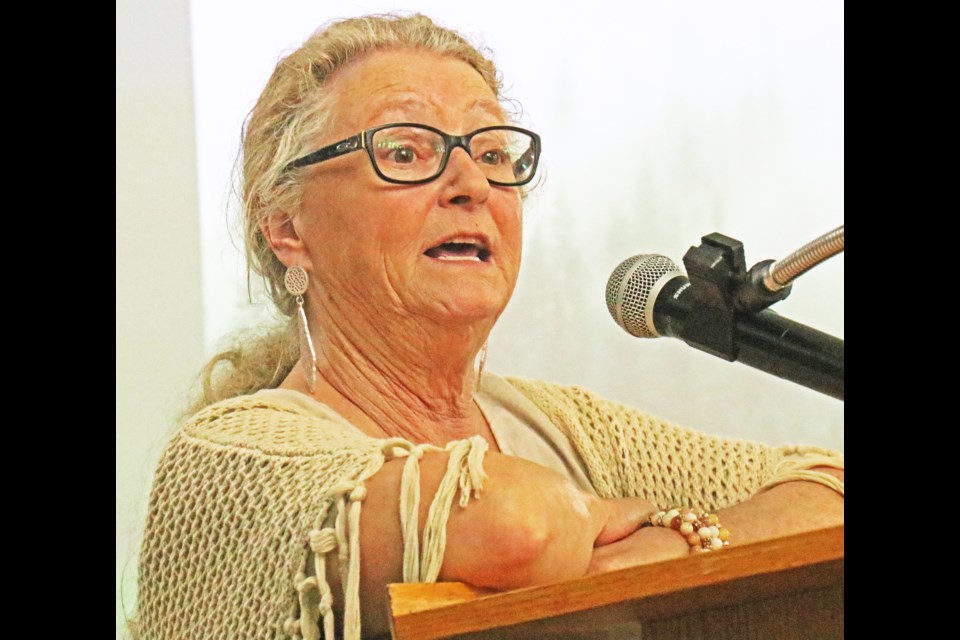WEYBURN - Members of the Weyburn Rotary Club were urged to encourage the City of Weyburn to hold a formal Treaty 4 recognition ceremony, as a part of the Truth and Reconciliation efforts ongoing in Canada.
Debbie Hagel, a member of the Estevan Rotary Club and director of Southeast Newcomer Services, spoke about the recognition ceremony, which was held in Estevan shortly before COVID hit, and described why this act would be appreciated and important.
Treaty 4, which encompasses the Weyburn region, actually covers most of southern Saskatchewan, and was signed in 1874, long before Saskatchewan became a province. Hagel first approached the City of Estevan in 2018 about holding such a ceremony, and was about to come to Weyburn to do the same but COVID cut that effort off.
For the ceremony held in Estevan, the three area First Nations in this region all attended and participated, including White Bear, Ocean Man and Pheasant Rump. “It’s a recognition of our First Nations, and it’s long overdue,” said Hagel.
She noted as this is a very sacred ceremony, it was not held as a public event but by invitation only, as requested by the First Nations involved.
There was an outdoor component of the ceremony, as it involved the burning of sage, before it was moved indoors for the remainder, and altogether it took about an hour and 45 minutes to complete, said Hagel.
There were indigenous drummers and singers involved in the ceremony, and Hagel noted that the components of the ceremonies were explained, including the significance and meaning of the songs and each part of the ceremony.
“This endeavour doesn’t take a lot of time nor is it expensive to do. There was no exchange of money for this ceremony. It’s an honour for the First Nations people. It’s a recognition of the treaty lands before we settled it,” said Hagel, adding that all of the RMs in the area were also invited to this ceremony.
“It’s very educational and a part of our history,” said Hagel. “I would encourage you to step up and get this acknowledged. It’s timely and it’s appropriate.”
Former local Rotarian Vic Wiebe asked why this wasn’t a public event.
“Because this is a very sacred ceremony. It’s not a parade. That’s why it was by invitation only. The newspaper and Access were there, and they presented it in the media. That is respecting the culture and respecting the event, and it was for the First Nations people that it was by invitation only,” answered Hagel.
Rotary member Duane Schultz noted that he attends several community events where the treaty acknowledgement is made, and asked how this ceremony is different.
Hagel noted this is the ceremony that takes place in order to allow the Treaty 4 flag to be hung in a given community. She also said this ceremony is very important and deeply meaningful to the First Nations residents, as it signifies the current residents are recognizing the land they live on belonged to the First Nations people first, and this will always be Treaty 4 land.
Asked how many communities have held this ceremony besides Estevan, Hagel noted that most of the major urban centres have, including Regina, Saskatoon, Prince Albert, North Battleford and Yorkton.
The Estevan ceremony had around 50 or 60 people in attendance, including municipal representatives, First Nations representatives and the media.
A guest at the meeting, Ron McCormick, noted he has lived in many First Nations and Inuit communities over his 30-year career, and said ceremonies like this one has gone a long way to help healing to begin from the wrongs of the past.
“It seems like such a simple thing to do here, it’s not a big complicated thing,” he said.
A city councillor, Laura Morrissette, was another guest at the meeting, and she said she’s personally very much in favour of this happening here, and may bring it to city council to see if there is interest at the city level for such a ceremony.




